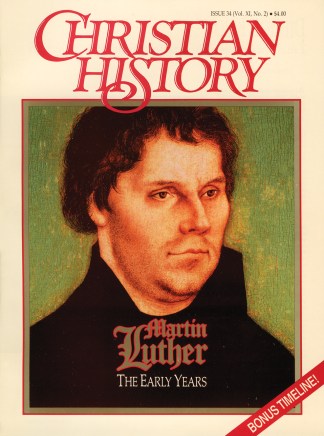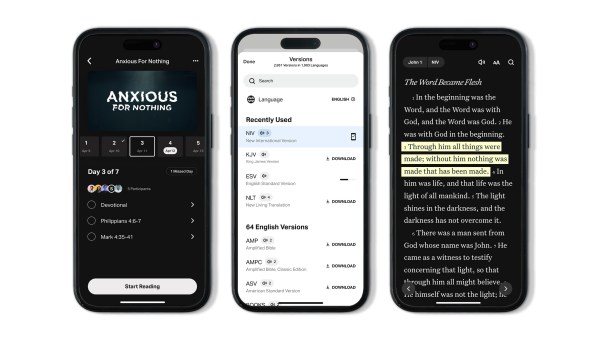Without printing, would there have been a Protestant Reformation? Would Luther have even survived?
Only a century earlier, both John Wycliffe and John Hus spawned movements of intense spiritual fervor. Wycliffe and Hus wrote prolificly also.
But, the absence of adequate printing technology limited the distribution of their works. As a result, their ideas did not spread as rapidly or as far as they might have. Wycliffe was condemned, Hus was burned at the stake, and history casts them as only harbingers of the Reformation.
Would Martin Luther have joined their ranks without access to a “modern” press? Would his revolutionary ideas have been contained? John Foxe, sixteenth-century author of the famous Book of Martyrs, would probably have said yes. “Although through might [the pope] stopped the mouth of John Huss,” he wrote, “God hath appointed the Press to preach, whose voice the Pope is never able to stop with all the puissance of his triple crown.”
Luther himself understood that books and pamphlets spoke long after he had left the pulpit. He referred to printing as “God’s highest and extremest act of grace, whereby the business of the Gospel is driven forward.”
Young Technology
It was only in the 1450s that Johann Gutenberg introduced technical printing advancements that made mass reproduction practical. When Luther posted his “95 Theses” some sixty years later, two dozen printing centers dotted Europe. Wholesale booksellers had developed distribution centers, and legions of traveling book hawkers crisscrossed the continent.
Ironically, Luther’s introduction to the press’s effectiveness may have been haphazard. Within two weeks of the posting of his “95 Theses,” they were printed, without his permission, and distributed throughout Germany. Within a month, they had flooded Europe. Six months later Luther explained to Pope Leo X, “It is a mystery to me how my theses…were spread to so many places. They were meant exclusively for our academic circle here…” In a letter of March 1518 he admitted he “had no wish or plan to publicize these Theses,” and that he had left it up to his friends to decide whether they would be “suppressed or spread outside.”
Flooding Germany
Even if the printing of Luther’s Reformation “manifesto” was unintentional, Luther quickly grasped print’s potential for soliciting grass-roots support. He began writing prolificly—more than four hundred works, including commentaries, sermons, and pamphlets that attacked Catholic doctrine and promoted Reformation distinctives. Between March 1517 and the summer of 1520, thirty of his pamphlets ran through a total of 370 editions. If each edition was one thousand copies, then almost four hundred thousand of his pamphlets alone flooded Germany during the first crucial years. From 1517 through 1523, the first six years after Luther posted the “95 Theses,” publications in Germany increased by seven times. Half of these writings were by Luther.
Luther’s opponents knew the impact of his printed works. A nervous Charles V banned Luther’s works in May 1521. In a letter that September, Catholic theologian Johann Cochlaeus complained, “Nearly all printers are secret Lutherans; they do not print anything for us without pay and nothing reliable unless we stand beside them and look over their shoulders.”
Journalistic Savvy
Luther has sometimes been called the first great journalist. Why did his writings succeed?
1. He spoke in the common language. Luther, a highly-trained academic, was fluent in Latin, the academic’s language. Most writings of the era were printed in Latin and thus reserved for society’s scholarly elite. Indeed, in 1500 probably only 5–10 percent of Europeans could read at all.
But Luther’s passion to promote the priesthood of even the most common believer could be satisfied only by appealing through the common language. He insisted on writing many of his works in German, particularly his monumental translation of the Bible. Soon shoemakers, tailors, and peasants could read the Scriptures and Luther’s writings in their own tongue.
2. He used a common format. A second element in Luther’s success was his use of the pamphlet format. He expanded the existing, single-page “broadsides” to multiple pages in quarto and octavo sizes. His pamphlets also feature some of the finest woodcuts and engravings of the times, so that even the semi-literate could catch the gist of his message. And in keeping with the need to reach all strata of society, his pamphlets were inexpensive. Like the broadsides popularized decades earlier, Luther’s pamphlets were snatched up (or shared) by those of even the most humble means.
3. He was known by common people. Luther’s crowning achievement was a German New Testament. Although it was not the first German translation of the Scriptures, Luther’s fame apparently secured its success before the ink dried. Three thousand copies were printed in the fall of 1522 with a second edition following in December.
In the words of adversary Johann Cochlaeus, Luther’s work was “so propagated and widely spread by the book printers that even tailors and shoemakers, indeed women and other simple idiots, who had accepted this new Lutheran gospel…read it eagerly, as if it were a fountain of all truth. Some carried it in their bosoms and learned it by heart.”
Ultimately, Luther’s message of justification by faith filled a longing in the German people that the established church’s teachings did not satisfy. His common pamphlets in the common language ignited hope among common people. Martin Luther spoke to Europe from two pulpits—one in the church, and one in the print shop.
Perry Brown is editorial director for the American Tract society in Garland, Texas.
Copyright © 1992 by the author or Christianity Today/Christian History magazine.Click here for reprint information on Christian History.










